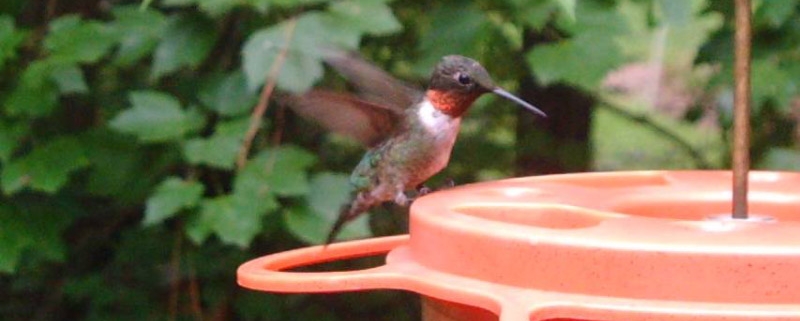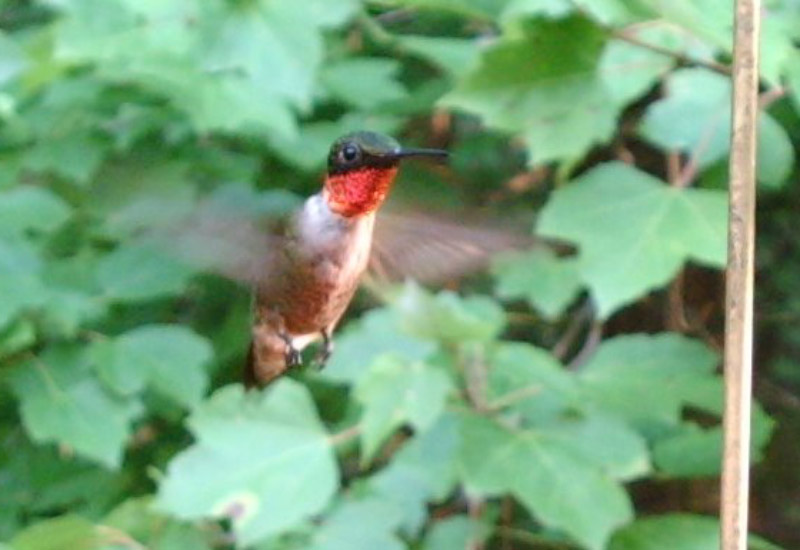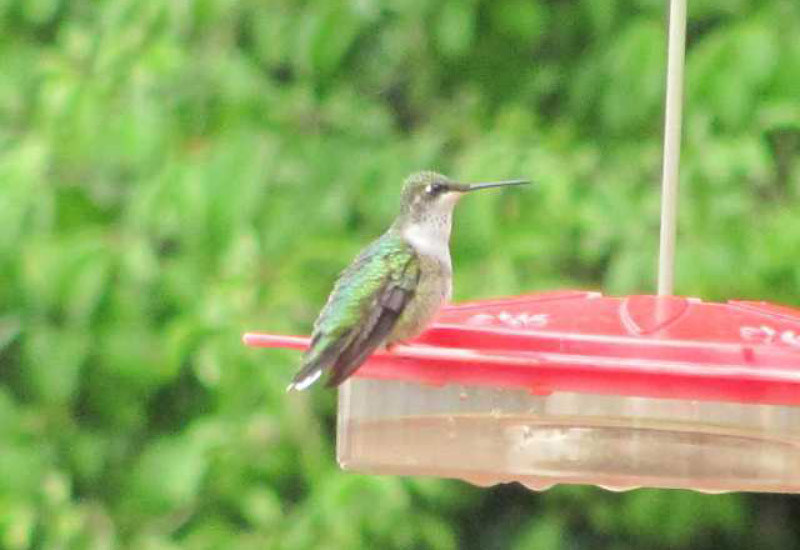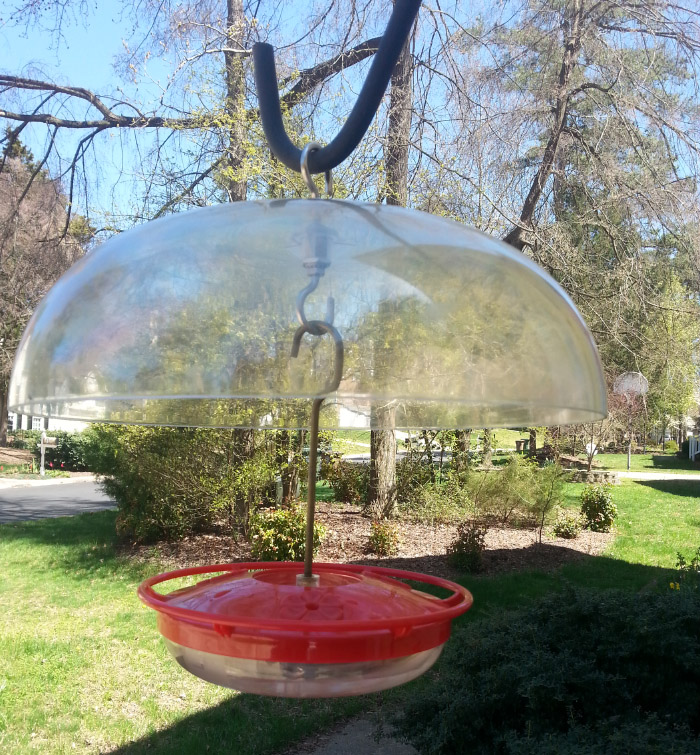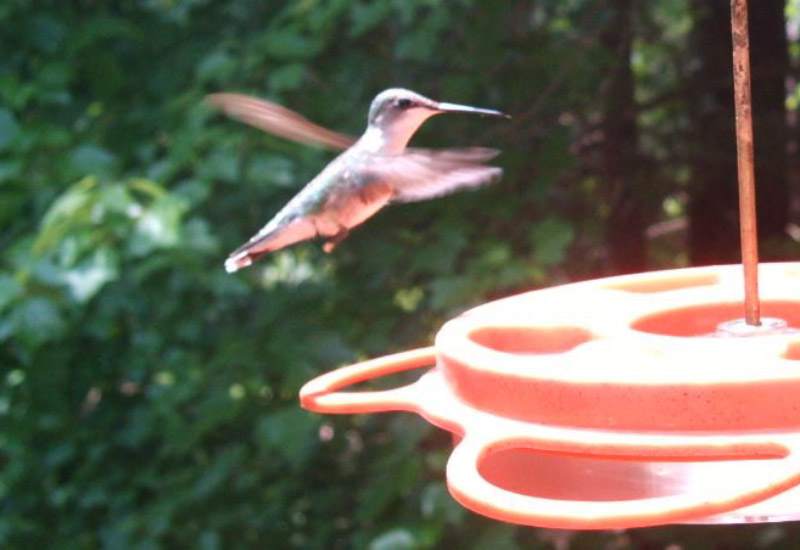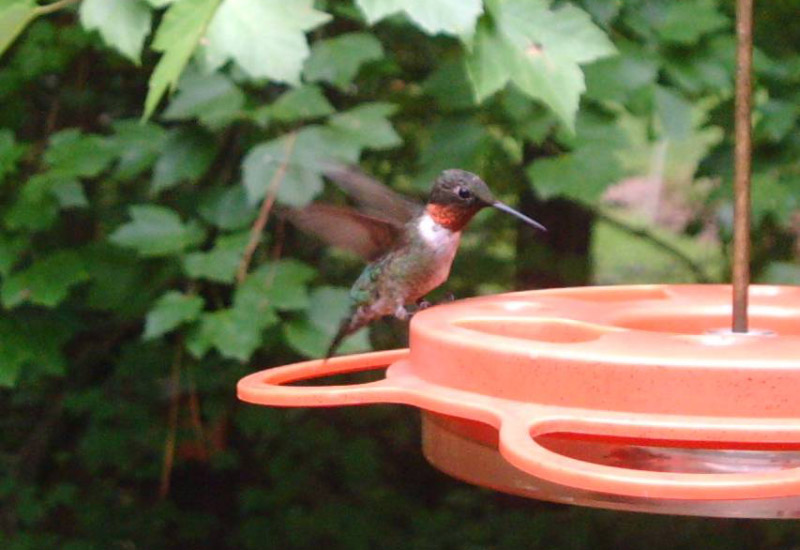Guide to Hummingbird Season
Cary, NC – It’s hummingbird season! Are you ready to welcome these fascinating Summer guests?
From April through September each year, Ruby Throated Hummingbirds (Archilochus colubris) take up residence in our area. They are readily found in Cary and easy to attract to feeders and gardens.
Where to Find Hummingbirds
The males are first to arrive from the tropics, in our area as early as mid-March. They get to work establishing territories and finding resources so that they’re prepared to attract the females who are a week to ten days behind. Their first chicks will enter the world in June, in tiny nests built in tree branches. Males and females are easy to tell apart. The males sport vivid red patches on their throats (which can look black in poor light) while the females are awash in light green.
Hummingbirds have especially intense metabolisms and need a great deal of food, relative to their tiny weights, to even make it through the day. That food takes the form of nectar drawn from plants (and feeders!) and insects.
We can provide some aid and assistance to these very hungry birds. The best help we can give is by establishing native plants in our gardens that are attractive and appropriate for hummingbirds. Among those I have added to my own gardens are Coral Honeysuckle, Bee Balm, Stokes Aster, Trumpet Vine, and Yellow Jessamine. And there are many others. Our local nurseries can suggest a variety of native species attractive to hummingbirds that bloom during the birds’ summer residency.
How to Care for Hummingbirds
Many homeowners enjoy setting out nectar feeders. Here are some guidelines to doing this.
- Use feeders that are easy to clean. One that I use (pictured) has a simple dish-and-lid. Nectar feeders can quickly develop harmful molds. Feeders should be cleaned with soap and water every few days if not more often.
- You can make your own nectar by adding one part cane sugar (no artificial sweeteners!) to four parts boiling water, then cooling. Red food coloring is not only unnecessary but potentially harmful to the hummingbirds.
- Be careful to position the feeder away from hanging limbs and fill the moat with water to avoid invasion by ants.
Put your feeders up in the next week or so and look forward to a summer of delight as the hummingbirds find and visit the nectar. You will also enjoy many hours of viewing Ruby Throated Hummingbirds from inside your own home.
Story and photos by David Lindquist.

